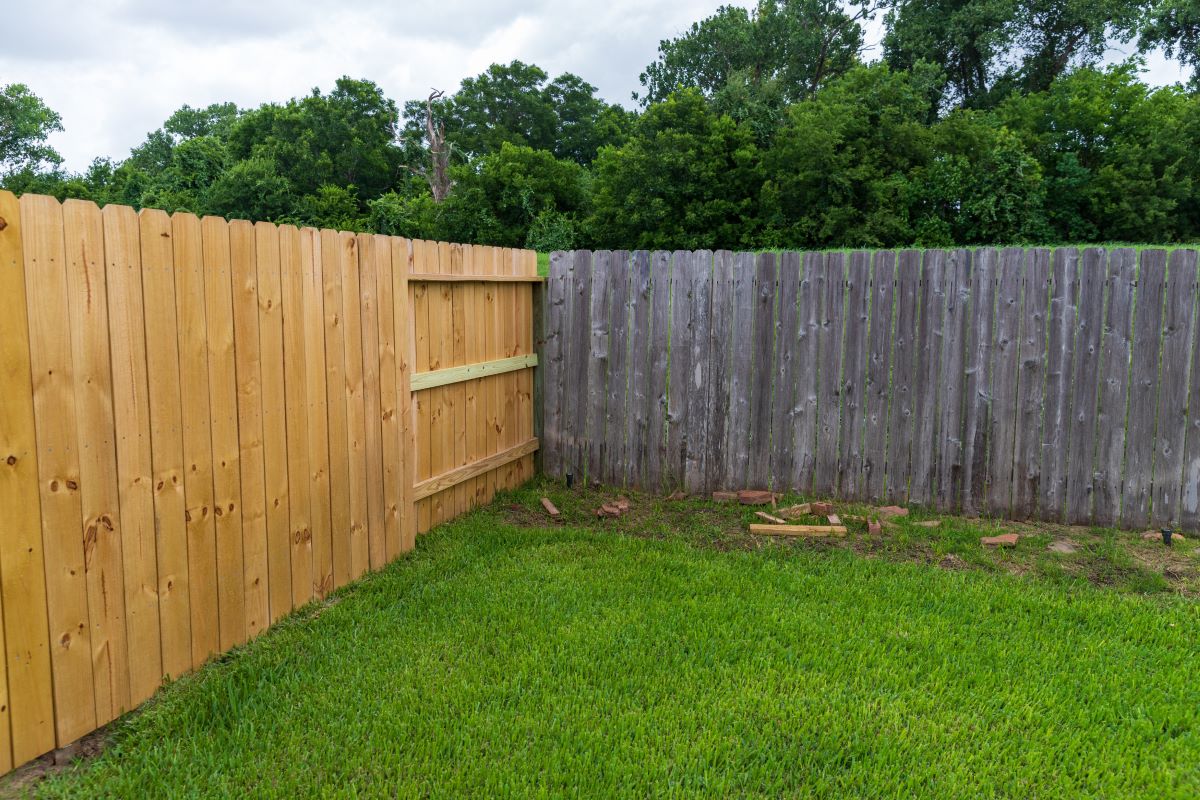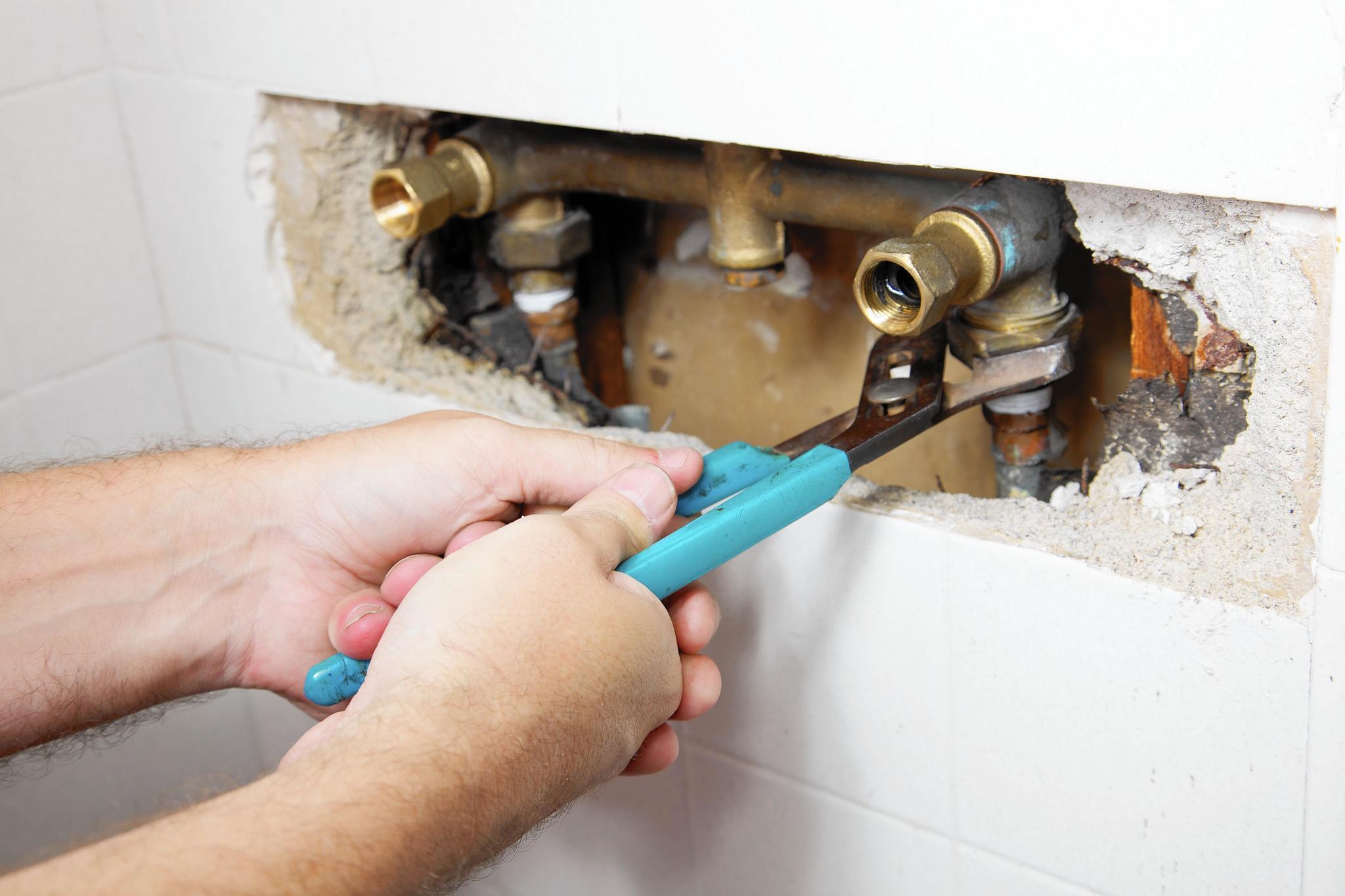Home>Home Maintenance>How To Write A Contract For Home Repairs Responsibility


Home Maintenance
How To Write A Contract For Home Repairs Responsibility
Modified: March 24, 2024
Learn how to write a thorough and legally binding contract for home repairs responsibility, ensuring proper home maintenance and protection.
(Many of the links in this article redirect to a specific reviewed product. Your purchase of these products through affiliate links helps to generate commission for Storables.com, at no extra cost. Learn more)
Introduction
Welcome to our guide on how to write a contract for home repairs responsibility. Whether you’re a homeowner hiring a contractor for a renovation project or a contractor providing services, having a well-written contract is key to ensuring a smooth and successful home repair process.
A contract serves as a legally binding agreement between the homeowner and the contractor, outlining the terms and conditions of the project. It clarifies the responsibilities and expectations of both parties, helping to avoid misunderstandings and disputes down the line.
In this article, we’ll provide you with a step-by-step guide on how to write a comprehensive and effective contract for home repairs. We’ll cover everything from identifying the parties involved to establishing payment terms and setting a timeline for completion. By following these guidelines, you’ll be able to protect your interests and ensure a successful home repair experience.
Before we dive into the details, it’s important to note that while we’ll provide you with general guidance, it’s always a good idea to consult with a legal professional to ensure that your contract complies with local regulations and meets your specific needs.
Now, let’s get started with the first step, which is understanding the importance of a contract for home repairs.
Key Takeaways:
- A well-written contract for home repairs is crucial for avoiding misunderstandings, protecting rights, and setting clear expectations for both homeowners and contractors.
- Including clauses for changes, dispute resolution, and termination provides a framework for addressing conflicts and ensuring a smooth and successful home repair project.
Read more: How To Write Up A Landscaping Contract
Understanding the Importance of a Contract for Home Repairs
When it comes to home repairs, having a clear and detailed contract is crucial for both homeowners and contractors. A well-written contract provides a written record of the agreed-upon terms and protects the rights and interests of both parties involved. Here are a few key reasons why a contract is essential:
1.1 Avoid Misunderstandings: A contract clearly outlines the scope of work, materials to be used, and any other specific details related to the project. This helps to avoid misunderstandings or assumptions about what is expected from each party.
1.2 Legal Protection: A contract serves as a legally binding document that protects the rights and interests of both the homeowner and the contractor. In case of a dispute or disagreement, a well-drafted contract can be used as evidence to resolve the issue.
1.3 Outline Responsibilities: A contract clearly defines the responsibilities of both parties. It outlines what the homeowner expects from the contractor and vice versa. This clarity helps to ensure that everyone is on the same page and knows what is expected of them.
1.4 Set Expectations: By including important details such as project timelines, payment terms, and any specific requirements, a contract helps to set clear expectations for both parties. This avoids any confusion or surprises during the project.
1.5 Cost Control: A contract should include a detailed breakdown of the costs involved in the project, including labor, materials, and any additional charges. This helps to ensure that both parties are aware of the financial implications and can budget accordingly.
1.6 Legal Compliance: Depending on the nature of the home repair project, there may be specific legal requirements or permits that need to be obtained. A contract can include provisions to ensure that both parties comply with these legal obligations.
Overall, a well-drafted contract for home repairs provides clarity, protection, and peace of mind for both homeowners and contractors. It establishes a professional relationship built on trust and accountability, setting the stage for a successful and satisfactory home repair experience.
Now that we understand the importance of a contract, let’s move on to the next step, which is identifying the parties involved in the project.
Identifying the Parties Involved
Before drafting a contract for home repairs, it is essential to clearly identify the parties involved in the project. Typically, this includes the homeowner and the contractor. Let’s take a closer look at each party:
2.1 Homeowner: The homeowner is the individual or entity that owns the property and is requesting the home repairs. It is important to include the full legal name of the homeowner, their address, and any other contact details necessary for communication purposes.
2.2 Contractor: The contractor is the individual or company responsible for carrying out the home repairs. When identifying the contractor, include their business name, address, contact information, and any relevant license or certification details.
2.3 Subcontractors or Third Parties: In some cases, a contractor may hire subcontractors or involve third parties to assist with the home repair project. If this is the case, it is important to identify these individuals or entities in the contract. Include their names, roles, contact information, and any necessary licensing or certification details.
By clearly identifying the parties involved, you establish a clear understanding of who is responsible for what in the home repair project. This helps to avoid confusion and ensures that all parties are aware of their roles and responsibilities.
Additionally, it is crucial to include a clause in the contract stating that neither party can assign or transfer their rights or obligations under the contract without the written consent of the other party. This helps to maintain the integrity of the agreement and ensures that all parties are aware of any changes or modifications that may occur throughout the project.
Now that we have identified the parties involved, let’s move on to the next step, which is defining the scope of the project.
Defining the Scope of the Project
Defining the scope of the project is a critical step in creating a contract for home repairs. This section outlines the specific details and requirements of the project, ensuring that both the homeowner and the contractor are aligned on what needs to be done. Here are some key points to consider when defining the scope of the project:
3.1 Project Description: Provide a detailed description of the home repair project, including information such as the type of repairs needed, the areas of the home that will be affected, and any specific materials or fixtures that are required. This helps to clarify the expectations and ensures that everyone understands the scope of the work.
3.2 Project Timeline: Specify the expected start date and the estimated completion date of the project. It is important to include a clause that addresses potential delays or extensions to the timeline and how they will be handled.
3.3 Permits and Approvals: If the home repair project requires any permits or approvals from local authorities or homeowner associations, include specific provisions outlining the responsibility of obtaining and maintaining these permits. This ensures that the project is conducted in compliance with all applicable laws and regulations.
3.4 Change Orders: Inevitably, there may be changes or modifications to the scope of the project as it progresses. Include a clause that outlines the process for requesting and approving any changes or additions to the original scope. This helps to maintain transparency and protects both parties from unexpected surprises.
3.5 Limitations: Specify any limitations or exclusions to the scope of work. For example, if certain areas of the home will not be included in the repairs or if certain types of materials will not be used, clearly state these limitations to avoid misunderstandings.
By clearly defining the scope of the project, both the homeowner and the contractor have a clear understanding of what needs to be accomplished. This helps to minimize potential conflicts and ensures that the project is completed to the homeowner’s expectations.
Now that we have defined the scope of the project, let’s move on to the next step, which is outlining the responsibilities of the homeowner.
Outlining the Responsibilities of the Homeowner
When creating a contract for home repairs, it is important to clearly outline the responsibilities of the homeowner. By doing so, you establish the expectations and ensure that the homeowner fulfills their obligations throughout the project. Here are some key responsibilities of the homeowner to consider including in the contract:
4.1 Access to the Property: The homeowner should provide the necessary access to the property, including keys, security codes, and any other required permissions for the contractor to carry out the repairs. This ensures that the contractor can perform their work efficiently.
4.2 Utilities and Services: The homeowner is responsible for ensuring that all necessary utilities, such as water, electricity, and gas, are available and properly functioning during the project. Any costs associated with these utilities are typically the responsibility of the homeowner unless otherwise specified in the contract.
4.3 Clearing the Work Area: The homeowner should ensure that the work area is clear of any personal belongings, furniture, or obstacles that may hinder the contractor’s ability to perform their work. This includes removing any valuable or fragile items from the vicinity of the repair site to avoid potential damage.
4.4 Compliance with Rules and Regulations: The homeowner should comply with any rules and regulations established by homeowner associations, local authorities, or other relevant entities. This includes obtaining necessary permits and approvals for the home repair project.
4.5 Payment: The homeowner is responsible for making payments to the contractor as outlined in the payment terms of the contract. It is important to clearly state the agreed-upon payment schedule, methods of payment, and any penalties for late payments.
4.6 Communication: The homeowner should maintain open and timely communication with the contractor throughout the project. This includes responding to inquiries, providing necessary information or approvals, and addressing any concerns or issues that may arise.
By outlining the responsibilities of the homeowner in the contract, both parties are aware of their obligations and can work together harmoniously to ensure the successful completion of the home repair project.
Now that we have outlined the responsibilities of the homeowner, let’s move on to the next step, which is outlining the responsibilities of the contractor.
Read more: How To Write A Contract For Home Renovation
Outlining the Responsibilities of the Contractor
When drafting a contract for home repairs, it is crucial to outline the responsibilities of the contractor. Clearly defining the contractor’s obligations helps ensure that the project runs smoothly and meets the expectations of the homeowner. Here are some key responsibilities of the contractor to consider including in the contract:
5.1 Scope of Work: The contractor is responsible for carrying out the agreed-upon scope of work as outlined in the contract. This includes completing the necessary repairs, installations, or renovations in a professional manner and in accordance with local building codes and regulations.
5.2 Licenses and Insurance: The contractor should possess all the necessary licenses and permits required for the specific type of home repair work being performed. It is also important to verify that the contractor carries valid insurance coverage to protect against any potential damages or liabilities.
5.3 Materials and Equipment: The contractor is responsible for providing and using the required materials, tools, and equipment to complete the home repair project. They should ensure that all materials used meet the agreed-upon quality standards and specifications.
5.4 Workmanship and Warranty: The contractor should perform the work with skill, diligence, and in a workmanlike manner. They should stand behind their work and provide a warranty or guarantee for a specified period to address any defects or issues that may arise after completion.
5.5 Cleanliness and Safety: The contractor should maintain a clean and safe work environment. This includes properly disposing of waste materials, protecting the homeowner’s property from damage, and adhering to all applicable safety regulations.
5.6 Timelines and Communication: The contractor should adhere to the agreed-upon project timeline and keep the homeowner informed of any changes or delays. They should maintain open and transparent communication throughout the project, addressing any concerns or questions promptly.
5.7 Subcontractors or Third Parties: If the contractor employs subcontractors or involves third parties in the project, they should be responsible for overseeing their work and ensuring that they adhere to the contract terms and quality standards.
By clearly delineating the responsibilities of the contractor in the contract, both parties can have a clear understanding of what is expected. This helps to establish accountability and ensures that the contractor carries out their duties professionally and to the satisfaction of the homeowner.
Now that we have outlined the responsibilities of the contractor, let’s move on to the next step, which is establishing payment terms.
Clearly outline the responsibilities of both parties in the contract, including the scope of work, timeline, payment terms, and any warranties or guarantees.
Establishing Payment Terms
Establishing clear and fair payment terms is crucial when creating a contract for home repairs. The payment terms outline how and when the homeowner will compensate the contractor for the work performed. Here are some important points to consider when establishing payment terms:
6.1 Payment Schedule: Specify the agreed-upon payment schedule in the contract. This can be based on milestones, such as a percentage of the total project cost due upon completion of certain stages, or a predefined schedule, such as weekly or monthly payments.
6.2 Total Project Cost: Clearly state the total project cost in the contract. This should include all materials, labor, and any additional charges, such as permits or fees. It is important to be specific and avoid any ambiguity regarding the final cost.
6.3 Retention: Consider including a retention clause, which allows the homeowner to withhold a portion of the payment until the project is completed to their satisfaction. This provides an incentive for the contractor to ensure quality workmanship and address any outstanding issues.
6.4 Payment Method: Specify the preferred method of payment, such as cash, check, or electronic transfer. It is essential to provide the necessary payment details, such as the contractor’s bank account information or mailing address, to facilitate a smooth payment process.
6.5 Late Payment Penalties: Include a clause addressing late payment penalties, such as interest or additional charges, in the event that the homeowner fails to make payments according to the agreed-upon schedule. This helps protect the contractor’s financial interests and encourages timely payments.
6.6 Change Orders: If a change order occurs during the project, clearly outline the process for calculating and invoicing any additional costs associated with the change. This helps to ensure transparency and avoid disputes related to unforeseen expenses.
6.7 Final Payment: Specify the conditions under which the final payment will be made, such as upon completion of the project and the homeowner’s approval. This ensures that the contractor has fulfilled their obligations before receiving the final payment.
By establishing clear payment terms in the contract, both parties have a mutual understanding of how and when payments will be made. This promotes transparency, minimizes the risk of payment disputes, and helps maintain a healthy working relationship between the homeowner and the contractor.
Now that we have established payment terms, let’s move on to the next step, which is setting a timeline for completion.
Setting a Timeline for Completion
Setting a timeline for completion is a crucial aspect of a contract for home repairs. A well-defined timeline ensures that both the homeowner and the contractor have a clear understanding of the project’s expected duration and helps keep the project on track. Here are some key considerations when setting a timeline:
7.1 Project Start Date: Specify the agreed-upon start date for the project. This serves as a reference point for calculating the overall timeline and helps both parties plan accordingly.
7.2 Milestones: Break down the project into specific milestones or stages, such as demolition, installation, and finishing touches. Assign estimated dates or durations to each milestone, providing a clear timeline for progress.
7.3 Completion Date: State the target completion date for the entire project. This allows the homeowner to plan accordingly and provides motivation for the contractor to work efficiently.
7.4 Delay and Extension Provisions: Acknowledge that unforeseen circumstances or changes in the scope of work may impact the original timeline. Include a clause that addresses how delays or extensions will be communicated, assessed, and managed to ensure a fair and efficient process for both parties.
7.5 Communication: Emphasize the importance of open and frequent communication regarding the project timeline. Both the homeowner and the contractor should provide regular updates, address any delays promptly, and work collaboratively to keep the project on schedule.
7.6 Penalties and Incentives: Consider including provisions for penalties or incentives related to the project timeline. Penalties could apply if the contractor fails to complete the project within the agreed-upon timeframe, while incentives may be offered for early completion.
7.7 Force Majeure: Account for circumstances beyond the contractor’s control that may impact the timeline, such as natural disasters or government-mandated shutdowns. Include a force majeure clause that outlines the procedure for handling such situations.
By setting a realistic and well-defined timeline for completion, both the homeowner and the contractor have a shared understanding of the project’s progress. This promotes efficiency, minimizes delays, and ensures a smoother home repair experience.
Now that we have set a timeline for completion, let’s move on to the next step, which is including clauses for any potential changes or modifications.
Including Clauses for Any Potential Changes or Modifications
When drafting a contract for home repairs, it is important to anticipate that changes or modifications may be necessary throughout the project. Including clauses that address these potential changes helps ensure that both the homeowner and the contractor are prepared to handle adjustments smoothly. Here are some key clauses to consider:
8.1 Change Order Process: Define a clear process for requesting and approving changes to the original scope of work. Specify that any changes must be agreed upon in writing and outline the steps for evaluating the impact on the project timeline, cost, and other relevant factors.
8.2 Change Order Documentation: Require that any change orders be documented in writing, including a detailed description of the change, the associated cost adjustment, and any agreed-upon timeline adjustments. Both parties should sign and acknowledge the change order to ensure mutual understanding.
8.3 Cost Adjustments: Specify how cost adjustments for change orders will be calculated, whether based on a fixed fee, time and materials, or other agreed-upon methodology. This ensures transparency and avoids disputes over pricing.
8.4 Impact on Timeline: Outline how changes or modifications may impact the overall project timeline. This may involve adjusting milestones, revising completion dates, or implementing additional resources to ensure timely completion.
8.5 Communication: Emphasize the importance of prompt and transparent communication regarding changes or modifications. Both parties should inform each other promptly of any requested changes and work collaboratively to assess the impact and reach a mutually acceptable agreement.
8.6 Approval Process: Specify who has the authority to approve change orders, whether it’s the homeowner, contractor, or both. It is essential to outline the timeframe for review and approval to maintain project momentum and avoid delays.
8.7 Effect on Contract Terms: Clarify that any changes or modifications agreed upon through change orders are considered part of the contract and are subject to the same terms and conditions, including warranties and dispute resolution provisions.
By including clauses that address potential changes or modifications, both the homeowner and the contractor are prepared to navigate adjustments smoothly. This promotes flexibility, reduces misunderstandings, and ensures that any modifications are properly documented and approved.
Now that we have covered clauses for changes or modifications, let’s move on to the next step, which is adding a clause for dispute resolution.
Adding a Clause for Dispute Resolution
In any contract, including a clause for dispute resolution is essential to address potential conflicts or disagreements that may arise during the home repair project. The inclusion of a dispute resolution clause helps both parties navigate disputes in a fair and efficient manner. Here are some key considerations when adding a dispute resolution clause:
9.1 Mediation: Specify that any disputes or claims arising from the contract should first attempt to be resolved through mediation. Mediation involves a neutral third party facilitating a discussion to help the parties reach a mutually acceptable resolution.
9.2 Arbitration: Alternatively, you can include a clause that requires any disputes to be resolved through arbitration. Arbitration involves presenting the dispute to a neutral arbitrator or panel who will make a binding decision based on evidence and arguments presented by both parties.
9.3 Selection of Mediator or Arbitrator: If mediation or arbitration is chosen as the dispute resolution method, clarify how the mediator or arbitrator will be selected. This may involve mutual agreement or referencing a specific organization or institution for the appointment.
9.4 Governing Law: Specify which jurisdiction’s laws will govern the contract. This helps determine the legal principles and procedures that will apply in case of a dispute.
9.5 Costs and Attorney’s Fees: Outline how the costs of mediation, arbitration, or any legal proceedings will be allocated between the parties. Consider specifying that the prevailing party will be entitled to recover reasonable attorney’s fees and costs from the other party.
9.6 Venue: Determine the location where any mediation, arbitration, or legal proceedings will take place. This provides clarity and convenience for both parties involved.
9.7 Waiver of Jury Trial: Include a provision stating that both parties waive their right to a jury trial in any legal proceedings arising from the contract. This emphasizes the intention to resolve disputes through alternative means, such as mediation or arbitration.
Including a dispute resolution clause helps mitigate potential conflicts by establishing a clear process to address disputes in a fair and efficient manner. It demonstrates a commitment to resolving issues amicably and avoids the often costly and time-consuming process of litigation.
Now that we have covered the dispute resolution clause, let’s move on to the final step, which is including a termination clause.
Including a Termination Clause
In any contract for home repairs, including a termination clause is important to address the circumstances under which the agreement may be terminated by either party. This clause provides clarity on the process and conditions for ending the contract. Here are some key considerations when including a termination clause:
10.1 Termination for Convenience: Specify that either party can terminate the contract for convenience with prior written notice. This allows for flexibility in case unforeseen circumstances or changes in project requirements arise.
10.2 Termination for Cause: Outline the conditions under which the contract can be terminated for cause, such as a material breach of contract by either party, failure to meet agreed-upon deadlines, or failure to adhere to quality standards. This protects the interests of both parties in case of significant violations.
10.3 Notice Period: Provide a specific notice period that must be given by the terminating party before termination takes effect. This allows for a reasonable period for the other party to address any issues or remedy the situation.
10.4 Rights and Obligations upon Termination: State the rights and obligations of both parties upon termination of the contract. This may include provisions for payment of completed work, return of materials or equipment, and any necessary transition or handover procedures.
10.5 Dispute Resolution: Specify that any disputes arising from the termination of the contract will be resolved as outlined in the dispute resolution clause discussed earlier. This ensures that potential conflicts related to the termination can also be addressed fairly and efficiently.
10.6 Survival of Clauses: Clarify that certain clauses or provisions will survive the termination of the contract. This may include confidentiality, intellectual property, warranty, or liability provisions that need to remain in effect even after the termination.
10.7 Final Settlement: State that the termination of the contract does not waive any rights or claims that either party may have against the other. This allows for the resolution of any outstanding issues or claims even after the contract has been terminated.
By including a termination clause, both parties have a clear understanding of the conditions and process for ending the contract. This helps to protect their interests and provides a framework for a smooth transition should termination become necessary.
Now that we have covered the termination clause, we have reached the end of our guide on how to write a contract for home repairs responsibility. By following these steps and including these essential clauses in your contract, you can create a comprehensive and effective document that sets clear expectations, protects the interests of both parties, and contributes to a successful home repair project.
Conclusion
Writing a comprehensive and effective contract for home repairs responsibility is crucial for ensuring a smooth and successful home repair project. By following the steps outlined in this guide, you can create a well-drafted contract that establishes clear expectations, protects the rights and interests of both parties, and promotes a positive working relationship.
Understanding the importance of a contract for home repairs, identifying the parties involved, and defining the scope of the project are the foundational steps in creating a solid contract. By clearly outlining the responsibilities of both the homeowner and the contractor, you can avoid misunderstandings and ensure that everyone is on the same page.
Establishing fair and transparent payment terms, setting a realistic timeline for completion, and including clauses for potential changes or modifications are essential in maintaining a smooth project flow. Additionally, incorporating a dispute resolution clause and a termination clause provides a framework for addressing conflicts and terminating the contract if necessary.
It’s important to note that while this guide provides general guidance, consulting with a legal professional is advisable to ensure your contract complies with local regulations and meets your specific needs.
By following these guidelines and infusing creativity and human-like touch into your writing, you can create an engaging and comprehensive contract for home repairs. Remember, striking a balance between informative content and SEO optimization will increase visibility and maintain an enjoyable reading experience for your audience.
Armed with this knowledge, you can confidently create a contract that protects your interests, fosters trust, and contributes to a successful home repair project.
Frequently Asked Questions about How To Write A Contract For Home Repairs Responsibility
Was this page helpful?
At Storables.com, we guarantee accurate and reliable information. Our content, validated by Expert Board Contributors, is crafted following stringent Editorial Policies. We're committed to providing you with well-researched, expert-backed insights for all your informational needs.














0 thoughts on “How To Write A Contract For Home Repairs Responsibility”